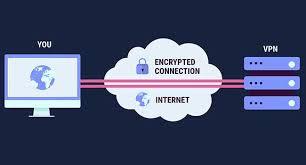Do you ever want to do science experiments at home, but you’re not quite sure what to do?
That’s why me and my friends has put our heads together to come up with the most awesome at-home science experiments! As science enthusiasts we also wanted to make sure that these are genuine science learning opportunities.
1. Saturn’s Glowing Rings
I don’t know about you, but I love everything about space. This experiment shows you how Saturn’s rings are made of rocks and ice chunks even though they look so smooth in pictures. You’ll also see why there are big gaps in the rings.
Questions to ask beforehand:
*Do Saturn’s rings give off their own light?
*Why are some rocks and ice chunks more lit up than others?
You’ll need:
*Newspaper
*Strong flashlight
*Powder (baby powder, etc) in a shaker
*dark room
Procedure:
Darken a room and set the flashlight on the edge of a table or counter, pointing it at a blank wall. Lay the newspaper on the floor between the flashlight and the wall.
Turn on the flashlight and notice where the light comes from the flashlight and where it hits the wall. You should only see the light from these two places and not from the space between them. This shows you that the light travels through the air without being seen until it hits the wall. The light represents the sun’s light.
Now to see how Saturn’s rings glow: Hold the powder shaker and sprinkle some powder over the beam of light where you know the light is traveling. You’ll notice the powder lights up and sparkles in the beam of light. The powder shows in glowing clumps, just like in Saturn’s rings.
2. Ultimate Bottle Flipping
The constant thud of semi-filled water bottles being tossed (and hopefully landing upright) is guaranteed to send everyone around the twist!
If you can stand it for a bit longer though, there’s a lot of knowledge to be gained in this bottle flipping experiment. As we know, the aim of bottle flipping is to flip a partially filled water bottle underhand and get it to land upright.
In this experiment, we will learn the importance of observing a result multiple times before changing a variable (the amount of water in the bottle).
Questions to ask beforehand:
*What is the ideal amount of liquid to get the perfect flip?
*Was their prediction correct?
*Why do they think the amount of water affects the chances of landing the bottle?
You’ll need:
A plastic water bottle
Measuring jug
Water
Pencil
Paper to record results
Procedure:
start by flipping bottle with no water in it at all. Try it again with 50ml of water.Keep adding more water until the bottle is full.If you are keen, you could try other types or sizes of bottles, or even try different liquids to see if that affects the results!
3. Rainbow in a Jar
This simple science experiment is not only very visually appealing, but it’s also a great way to learn about the density of liquids. I like this experiment because you’ll probably have most of the materials in your kitchen already!
Questions to ask beforehand:
*Which liquids they think will be heaviest?
*Which ones will be lightest?
You’ll need:
*A glass jar
*Food coloring
*Various liquids like honey, corn syrup, dishwashing liquid, olive oil, rubbing alcohol and water.
Procedure:
Use the food coloring to make all your liquids a different color. A dropper comes in handy here, but if you don’t have one you can manage without.
Slowly add each liquid to the jar.
Soon, you’ll have different layers of colored liquid forming your very own rainbow in a jar.
You might even get them to draw a diagram of what they think the jar will look like at the end. They can compare this with the experiment results to see if their prediction was correct.
click here
It might also help to about what density is and how materials are all made of different amounts of molecules. The more molecules a liquid has, the heavier it will be.
4. Make A Rubber Egg
Imagine a world in which eggs can be used like bouncy balls. Well, with a couple of home supplies and a little bit of science, you can live in that world.
Questions to ask beforehand:
*Is vinegar an acid or a base?
*Is there another substance that could do this?
You’ll need:
*A Cup
*An Egg
*Vinegar
Procedure:
Simply leave the egg in the vinegar for a few hours and wait to see what happens. Because of the transformative nature of this experiment, it lends itself to science journaling.Draw before and after pictures of the eggs in order to track journey.
5. Blow up a Balloon with Yeast
We are surrounded by science in action, but sometimes it is really difficult to see what is happening, especially when it is on a small-scale. When we make bread, yeast ‘eats’ the sugars in the food and creates CO2, giving bread its airy texture. This experiment lets you both visualize what happens when yeast consumes sugar and is a great set-up for an experiment that can be observed throughout the day.
Questions to ask beforehand:
*How quickly does the balloon filled with air?
*When does it stop filling (at some point the yeast will run out of food and will stop making gas)?
*Does the starting temperature affect the experiment?
You’ll need:
*A bottle
*Some balloons
*Yeast
*Sugar
*Warm water
Procedure:
Blow up the balloon a few times before starting so that it’s loosened up a bit.Fill the bottle about 1 inch of warm water (heat is required to activate the yeast, but you could experiment with different temperatures), add the yeast and swirl to dissolve.
Add the sugar and swirl more.
Place the balloon over the opening to the bottle and wait. You should expect to see the balloon begin to inflate after around 20 minutes.
Continue checking and observing how much the balloon inflates throughout the day.
6. Seed Germination
A really simple but fun multi-day experiment is germinating seeds under different conditions. This means finding some quick-sprouting seeds such as beans and putting them in different conditions to see how that affects germination (sprouting leaves and roots) and growth.
A question to ask beforehand:
*Which seed will sprout fastest?
You’ll need:
*Seeds (Beans, radishes, squashes, and many flowers sprout quickly from large seeds, making them good choices.)
*Small pots or paper cups
*Potting soil
*Sand
*Cloth or paper towel
*Water
*good light
Procedures:
To get started, you’ll need some seeds – feel free to choose something you already have, or find something online or at your local nursery.
Use small pots or paper cups and fill each with your growth material
Fill one with potting soil, one with sand, and one with a cloth or paper towel.
Place them somewhere with good light, and add water.
Now predict which seed will sprout fastest, and make observations every day. If possible, be around the same time each day.
Once you see growth, think that caused any differences, and you can use that as a jumping-off point for more experiments
HEY YA ALL!!COMMENT DOWN BELOW MORE TOPICS THAT I SHOULD BLOG..😁









Comments
Post a Comment